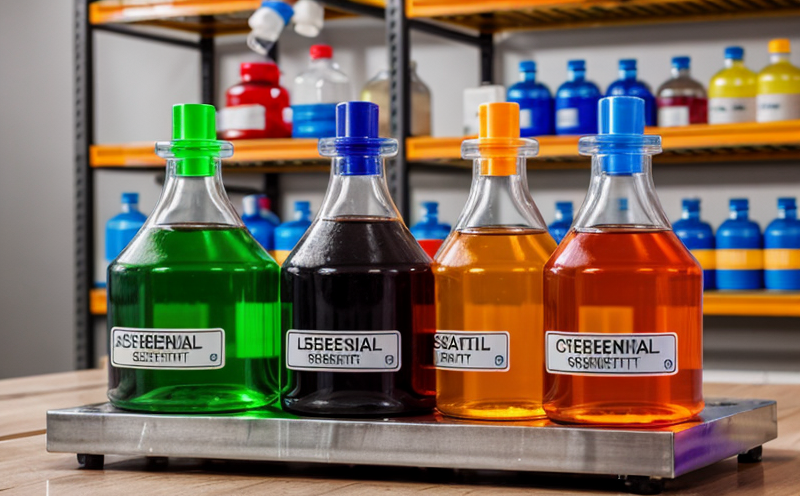Nitrosamine Content Testing in Rubber Products
Within the realm of consumer products and product safety testing, nitrosamines are a critical concern. They pose significant health risks due to their potential carcinogenic properties when ingested or absorbed through skin contact. Nitrosamines can be found in various materials used in manufacturing, including rubber products like tires, footwear, hoses, seals, and gaskets.
The testing of nitrosamine content is essential for ensuring the safety of consumer goods. This process involves identifying and quantifying nitrosamines present in rubber compounds to ensure compliance with international standards and regulations designed to protect public health. These standards include ISO 14972, which focuses on biological evaluation of medical devices; ASTM F836, a guideline for testing footwear; and EN 71-3, a European standard for safety aspects of toys.
The testing procedure typically begins with sample preparation. Rubber samples are cut into small, uniform pieces to ensure accurate analysis. The samples are then subjected to extraction using solvents like methanol or acetone, which help in releasing nitrosamines from the matrix. After extraction, the solution is analyzed using advanced analytical techniques such as high-performance liquid chromatography (HPLC) coupled with tandem mass spectrometry (MS/MS), enabling precise quantification of specific nitrosamine compounds.
Understanding the acceptable limits for nitrosamine content in rubber products is crucial. Regulatory bodies like the European Union and the United States have set maximum allowable levels to minimize exposure risks. For instance, the EU’s REACH regulation requires manufacturers to report any presence above 50 parts per billion (ppb) of certain nitrosamines.
Compliance with these standards is not only a legal requirement but also an ethical responsibility. It ensures that products are safe for end-users and aligns with the principles of sustainability by promoting healthier consumer goods. In this context, rubber products must undergo rigorous testing to guarantee compliance with safety norms.
The benefits of conducting nitrosamine content tests extend beyond mere regulatory compliance. They provide valuable insights into production processes, allowing manufacturers to identify potential sources of contamination and implement corrective measures. This proactive approach can lead to improved product quality and enhanced consumer trust.
Why Choose This Test
The decision to conduct nitrosamine content testing in rubber products is driven by several compelling reasons. Firstly, it ensures compliance with international safety standards like ISO 14972, ASTM F836, and EN 71-3, which are pivotal for maintaining the credibility of your product line.
Secondly, nitrosamine testing helps in identifying potential health hazards associated with rubber products. By detecting even trace amounts of these compounds, manufacturers can take necessary steps to mitigate risks, thereby protecting public health and safety. This is particularly important given the widespread use of rubber in consumer goods like footwear and medical devices.
Thirdly, compliance with nitrosamine testing requirements enhances brand reputation by demonstrating a commitment to quality and safety. It reassures consumers and regulators alike that your products meet stringent safety criteria. Moreover, it fosters trust within the market, potentially leading to increased customer loyalty and sales.
The economic benefits of this test are also significant. By avoiding non-compliance penalties and potential product recalls, manufacturers can save substantial costs associated with rework or redesigning flawed products. Additionally, consistent compliance reduces liability risks and ensures a steady flow of product to market, optimizing business operations.
Environmental and Sustainability Contributions
Incorporating nitrosamine content testing into your quality assurance protocols aligns with broader sustainability goals. By ensuring that rubber products meet strict safety standards, you contribute to reducing the environmental footprint by promoting safer manufacturing practices.
The reduction of nitrosamines in consumer goods leads to a healthier environment as it minimizes exposure risks for end-users and workers involved in production processes. This proactive approach also supports regulatory compliance with international environmental policies like REACH, which aims at protecting human health and the environment by improving the control of chemicals.
Furthermore, by adhering to stringent testing protocols, manufacturers can innovate sustainable solutions that enhance product safety without compromising performance or aesthetics. This commitment to sustainability not only strengthens brand reputation but also aligns with global trends towards eco-friendly products.
The implementation of nitrosamine content testing in rubber products represents a comprehensive strategy for maintaining high standards across the entire supply chain. By integrating this practice, manufacturers can foster a culture of continuous improvement and innovation, ultimately contributing to a safer and more sustainable future.
Use Cases and Application Examples
- Tire Manufacturing: Ensuring that tires do not contain harmful nitrosamines is crucial for the automotive industry. This testing helps in preventing potential health risks associated with prolonged exposure to rubber compounds.
- Footwear Production: In the footwear sector, nitrosamine content testing ensures compliance with safety standards for consumer goods like shoes and boots. This guarantees that products are safe for end-users, especially children who may come into frequent contact with these items.
- Medical Devices: For medical devices fabricated from rubber materials, ensuring the absence of nitrosamines is vital to prevent adverse health effects on patients. This testing ensures that healthcare providers and consumers trust the safety of such devices.
- Toys Manufacturing: Given the frequent contact children have with toys, it is imperative that these products are free from harmful substances like nitrosamines. Testing at this stage helps in maintaining high standards of product safety.





